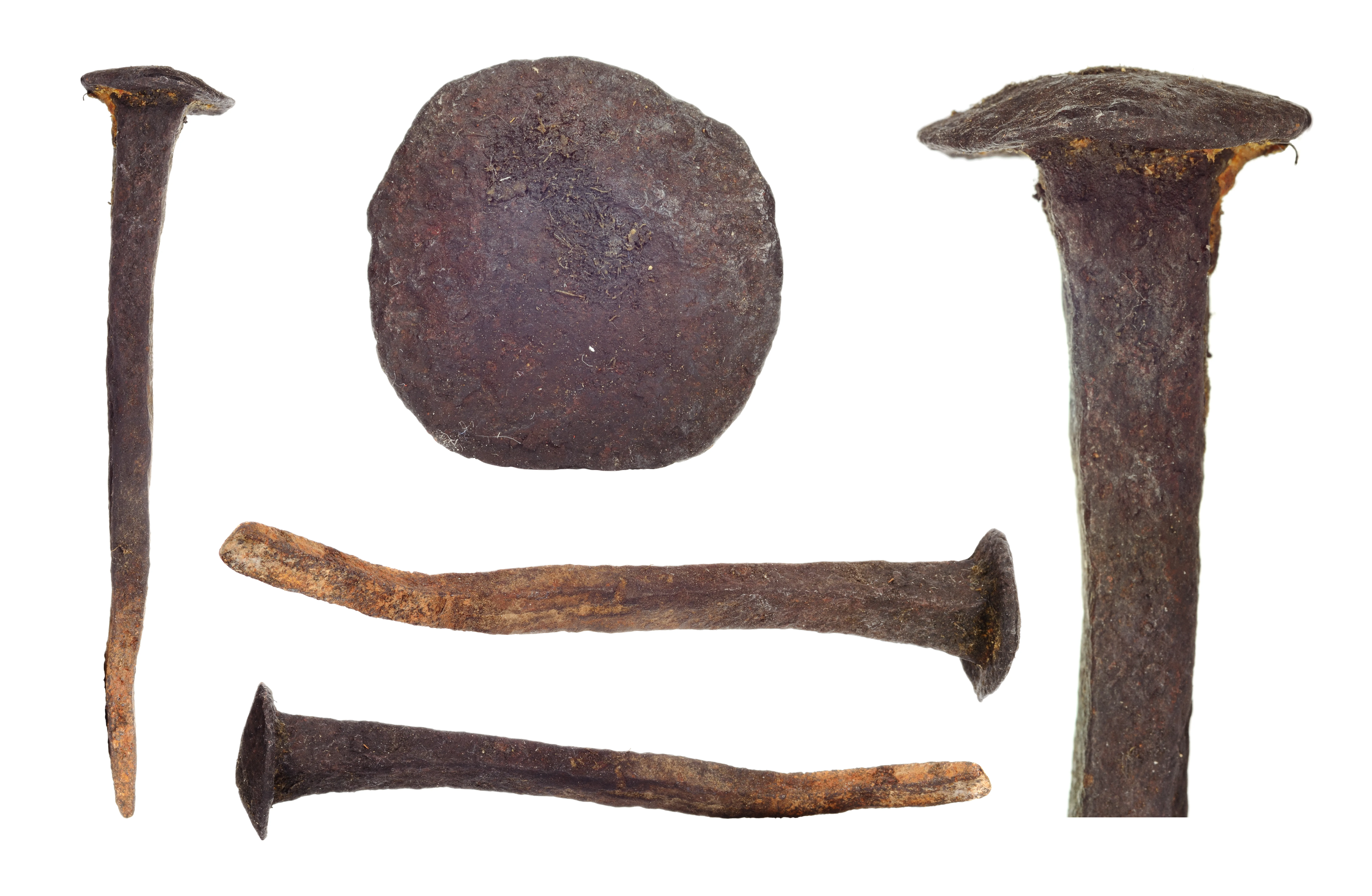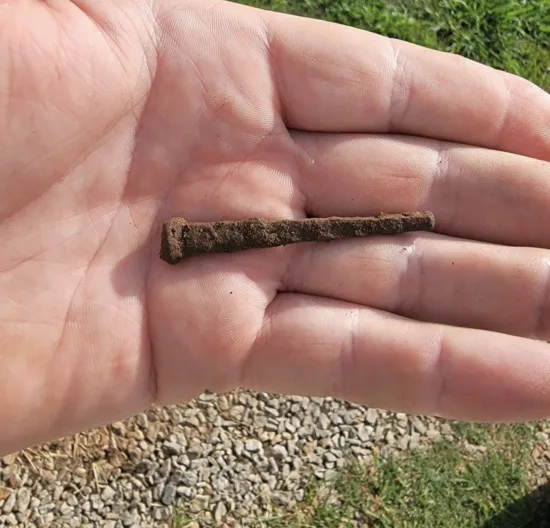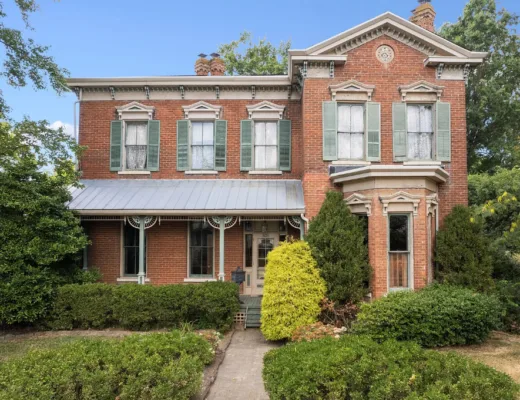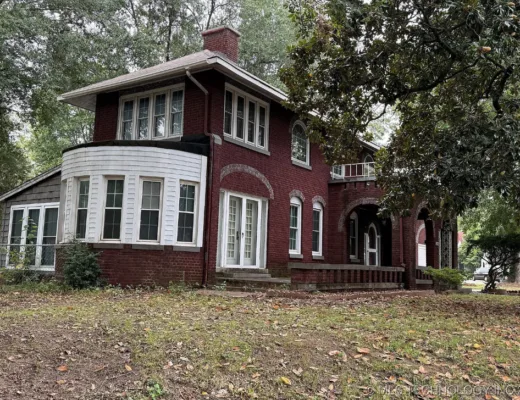If you’ve ever peeled back a floorboard or removed a piece of trim in an old house, you’ve probably found a few rusty nails tucked away like forgotten secrets. They might seem ordinary, but those little fasteners can tell you a lot about your home’s past…how it was built, when certain parts were added, and even the craftsmanship behind it. In many ways, nails are some of the smallest storytellers in an old house, quietly holding together pieces of history.
Let’s take a closer look at how nails have changed through time, and what they can reveal about the era your house was built in.
Hand-Wrought Nails (1700s-Early 1800s)
Era: Colonial to early Federal
Made by: Blacksmiths, hammered by hand
Clues:
- Irregular, square or rectangular shape
- Tapered shank
- Hammered head (often slightly off-center)
- Used in framing, wide plank floors, and early plaster lath
What it means: If you find these, you’re looking at 18th-century craftsmanship — before industrial manufacturing took over

An example of what a hand-wrought nail would look like
Cut Nails (1790s-Late 1800s)
Era: Early Industrial Revolution
Made by: Machines cutting rectangular shafts from iron plates
Clues:
- Rectangular shank with sharp edges
- Flat, sometimes T-shaped head
- Driven with flat side parallel to the wood grain
What it means: Common in the 19th-century houses, especially Greek Revival, Italianate, and early Victorian homes.
Wire Nails (1890s-Present Day)
Era: Turn of the century onward
Made by: Fully automated machines using drawn wire
Clues:
- Round, uniform shaft
- Consistent shape and size
What it means: Indicates construction or renovation AFTER 1890, typical of late Victorian, Craftsman, and 20th-century homes.
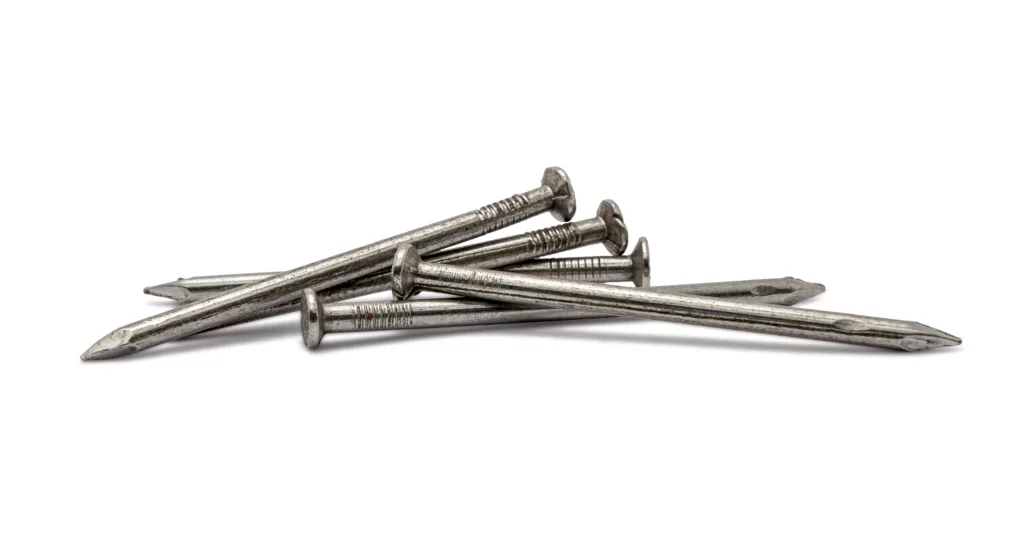
Wire Nails, the standard today.
Transitional Clues
Sometimes old houses show a mix of nail types:
- Hand-wrought nails in floorboards but wire nails in trim? -> Later additions or updates.
- Cut nails in framing but wire nails in baseboards -> A house built during the transition era (1880s-1910s).
- Square nail holes but round nails present? -> Lumber was reused from an earlier structure.
Each combination tells a story about how your house changed over time.
Where to Look
Check attics, basements, or behind old trim — anywhere untouched by modern updates. Gently remove one or two nails and note where you found them, or take photos for reference. These tiny details can confirm your home’s construction date alongside architectural style and materials.
Why it Matters
Nails might be small. but they’re powerful clues. They reveal the timeline of craftsmanship, industrial change, and even resourcefulness — like when builders reused old boards from barns or earlier houses.
When you start paying attention to them, you’re not just educating yourself on hardware — you’re uncovering your home’s story.
The Takeaway
The next time you spot an old square nail peeking from a joist, don’t toss it. Save it as a little artifact and start a collection! Each one is a marker of time, a fingerprint from the hands that built your home — a small piece of history, still doing its job centuries later.

